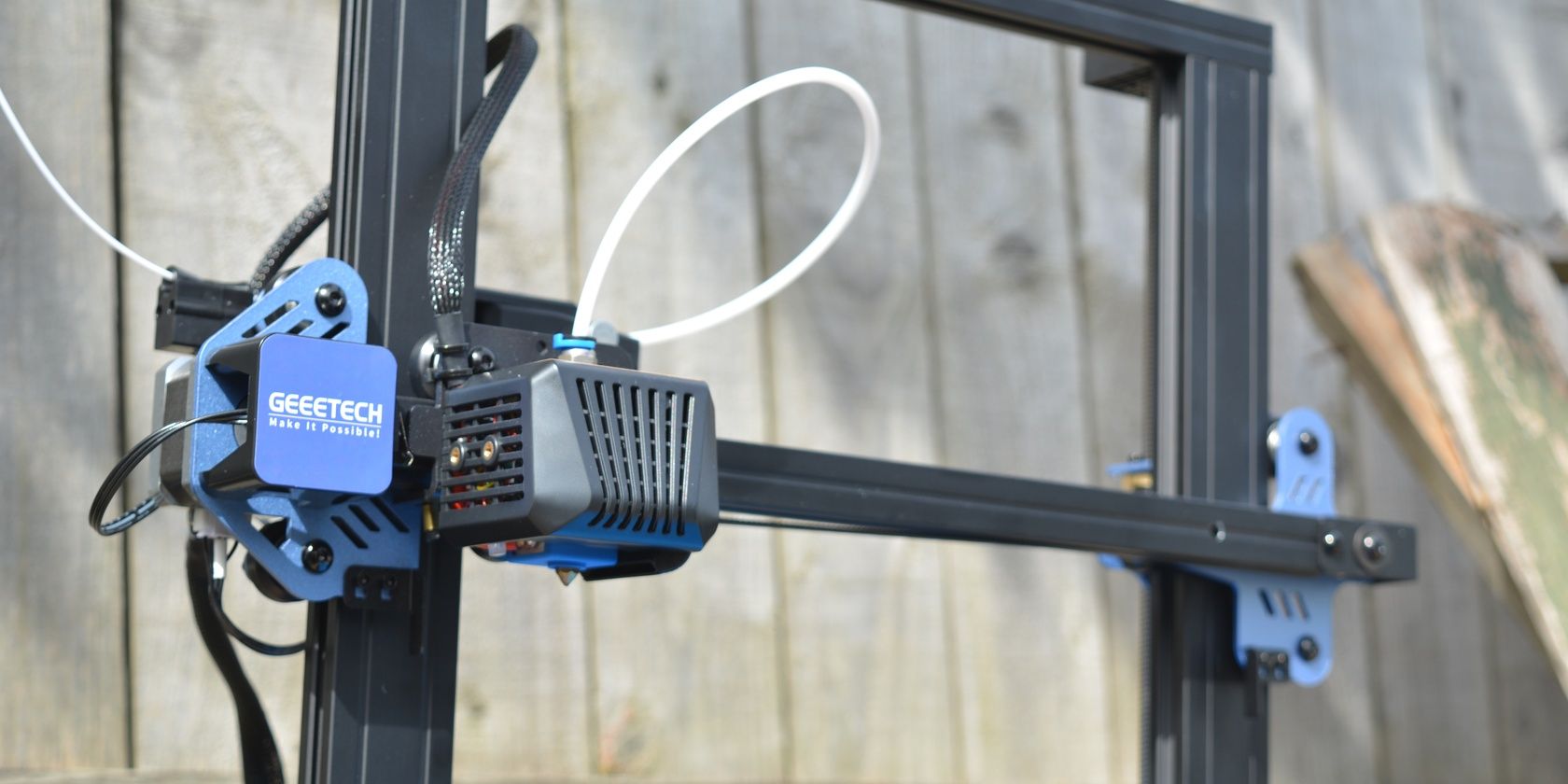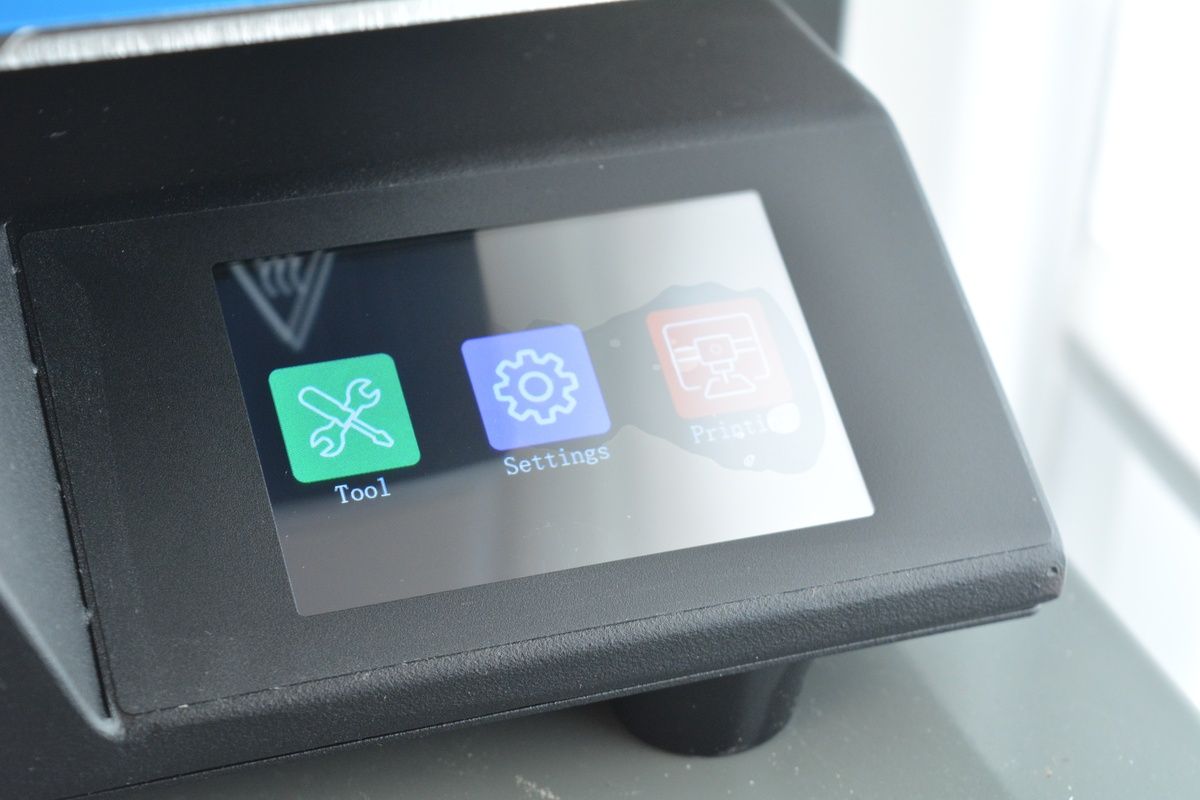While auto-leveling is a huge time saver for 3D printing and the plug-and-print usability makes this a smart choice, the Geeetech Mizar S 3D Printer experience is hampered by a collection of niggles, manufacturing issues, and odd design choices.
- Auto-leveling
- Prints PLA, PETG, ABS, TPU, and more
- Filament detection sensor
- Double gear extruder
- Printing light
- Quick and easy belt adjustment
- Compatible with Windows, macOS, Linux
- Build Volume: 255x255x260mm
- Printing Speed: 10~150mm/s, 60~80mm/s recommended
- Materials Used: PLA,ABS, PETG, Silk PLA, Wood Polymer
- Brand: GEEETECH
- Easy to assemble
- Plug-and-print
- Auto-leveling surprisingly accurate
- Doesn't include software contrary to manual
- Filament detection didn't work
- Touchscreen spoiled by air bubbles
- Adhesion is an issue, before and after printing
- Position of USB port is inconvenient
Consumer 3D printers have been available for over a decade, with each generation improving on the one before. One of the largest 3D printer manufacturers, Geeetech, recently released the Mizar S, a 3D printer with auto-leveling and other features introduced as a response to user feedback.
But how do these fixes work out in practice? At around $400, is the Geeetech Mizar S a 3D printer you should consider, or do the solutions just result in more problems?
My First 3D Printer
At this point it is certainly worth highlighting that this is my first 3D printer. I’m not completely green to the concept, having used 3D printing services in the past. I also have minor experience with plastic filaments and hot ends thanks to 3D printer pens, a very different type of product but one that at least provides some insight of the shortcomings of PLA, ABS, and similar materials.
And to be honest, I’ve watched way too many videos about 3D printing to not actually own one, so here we go...
Why Choose the Geeetech Mizar S?
Whether you’re new to 3D printers or a veteran, the Geeetech Mizar S has various key features worth having, not least the auto-leveling bed.
The aluminum heated bed has a magnetic layer, and a removable steel sheet coated in Mylar to aid adhesion and removal of printed items. Supposedly, anyway; we didn't have much luck. The system also boasts power-off protection for outages, a filament detection sensor for snapped or exhausted filament, and a double-gear extruder for smoother printing. Meanwhile, the belt can be easily adjusted, and an LED can be enabled next to the print nozzle for clearer observation printing.
Inside, a 32-bit silent motherboard is cooled by fans, and printing is controlled using the “responsive” touchscreen.
Geeetech Mizar S Device Specification
A fused deposition modeling (FDM) printer with a layer thickness of 0.1 to 0.2 millimeters, the Geeetech Mizar S has a build platform volume of 255 x 255 x 260mm, and can print with PLA, ABS, PETG, Silk PLA, Wood Polymer, and more.
Positioning is precise on the X and Y axes to 0.011mm, and on the Z axis to 0.0025mm. Print accuracy is to 0.1mm, with a recommended speed of 60-80mm/s (though 10-150mm/s is possible).
Weighing 11kg, and measuring 362(W) x 377(L) x 653(H) mm, the Geeetech Mizar S has a single TF card slot, a USB port, and runs at a maximum of 360W. Be sure to check the correct AC voltage is set before plugging it in.
What You Get With the Geeetech Mizar S
Unpacking the Geeetech Mizar S you’ll find a gantry kit, the main base with attached hot bed, a USB type-A cable, power cable, shovel/scraper, spare Teflon tube for the filament, cable ties, a filament holder unit to assemble, a toolkit, two spare nozzles, microSD card with STL files and manuals, a bag of screws, belt tensioners, the Y-axis limiter switch, and some test filament. There is also a printed user manual.
All of this is packaged in a single box, measuring 522(L) x 482(W) x 310(H) mm. It’s not portable, and you should set the printer up where you intend to use it. Moving it around afterward isn't a good idea, certainly not regularly. Ideally, choose somewhere that isn't subject to gusts and draughts, as small variations in ambient temperature can affect print bed adhesion.
For testing, we also received two reels of PLA, in white and black.
Geeetech Mizar S Set-up and Assembly
Much of this 3D printer is pre-assembled. Well-packaged and secure in the box, all you really need to do is attach the Z-axis gantry, connect some cables, and fix the filament reel holder to the top. This last component is temperamental at best: the T-shaped nuts are tricky to get a grip in the gantry at the top of the printer.
I made the mistake of incorrectly attaching the other component, the Y-stop sensor. Shipping in two pieces, I attached only one, with the circuit side inside facing down, where the cover piece should have been fixed.
Unsurprisingly, this resulted in a problem: the print bed flinging itself backward with every attempt at auto-leveling. Fortunately, this was resolved by correctly assembling the sensor to cover the bare circuit.
The Geeetech Mizar S Touchscreen User Interface
Control over the Geeetech Mizar S is via a touchscreen, which presents all the options you need to move, service, and initiate prints. If you’ve used a 3D printer before, you’ll probably recognize the UI, which is common to this type of device.
One problem with the review device: the upper layer of the touchscreen was full of air bubbles. This was after the protective film was removed, and appears to be between the display and the touch-sensitive layer. A problem less common these days than it was, it’ gives the touchscreen a cheap feeling.
Not good. Furthermore, this “responsive” touchscreen (according to the Geeetech website) is not that responsive at all, no doubt due to the air bubbles.
While the touchscreen is mounted on the right-hand of the front of the printer, the USB port and MicroSD (TF card) slot are situated on the left. This seems convenient enough until you consider the idea of having a USB cable jutting out of the front of such a large piece of kit. Better planning might have put the port at the side of the printer, or even at the back, alongside the power connector.
Some Initial Problems With the Geeetech Mizar S
Overall, the Geeetech Mizar S is a decent 3D printer with some smart features. But it fails in a couple of key areas that it really shouldn't.
To begin with, there is no software included, despite advice to contrary in the instruction manual. While the microSD card features plenty of manuals and STL files to be getting on with, I had to install Ultimaker Cura. Sadly, Cura doesn't have a profile for Mizar S at this stage, which meant risking a profile for a different Geeetech 3D printer.
When printing, the hotbed succeeds in getting hot, but adhesion to the magnetic sheet is a problem, one that requires the age-old solution of some glue or tape. But this, even when combined with printing a brim or raft, isn’t guaranteed to solve adhesion problems. And while the printer is quiet, it is of course radiating a bit of heat.
Finally, the filament detection sensor, touted as being able to "detect abnormal conditions such as a broken or exhausted filament" failed to detect both of those things. The print was not automatically suspended, and indeed that entire scenario led to hours of troubleshooting, attempting to determine the location of a blockage in the filament loading system, swapping out the spare filament tube, and generally disappointing.
Contrary to the feature list, the “cooled” print bed isn’t any easier to remove printed items from as a still-hot bed. This was the case whether glue was used or not, which suggests the Mylar holds onto printed items longer than expected.
Printing With the Geeetech Mizar S
You can’t expect the first print from any device (plastic or ink) to be successful. However, the Geeetech Mizar S has adjusted my expectations down considerably.
The initial print revealed the issues with adhesion to me, something I had a general knowledge of but was previously unaware of the degree to which it could be an issue.
Throughout testing, the only prints that worked out as intended were larger examples that printed slowly, such as the 3Dbenchy and the rocket ship. Weight and speed certainly played a part here. One of the attempts, a small Eiffel Tower, failed repeatedly, despite various adjustments to the set-up. I can only surmise that this design was too small, or extruded too quickly. One of the shortcomings of not having a dedicated profile in Cura, perhaps? It’s worth noting also the included toolkit includes small wrenches that didn’t actually fit anything on the printer. When it came to replacing the extruder nozzle, I had to dig into my own toolbox. Meanwhile, the included file is inadequate for shaving inaccuracies.
Overall, the printer outputs at a decent 0.1mm thickness. In testing, I've seen both ends of the scale of quality achievable with the Geeetech Mizar S. Unsurprisingly, the slower the print, the better.
Can You Love a 3D Printer?
Taken at face value, this is a good 3D printer, albeit one that misses key features and under-delivers on others.
For example, you can only print one filament at a time. While the pause feature should help with this, I wouldn’t rely on it after the filament snapped and the (enabled) sensor didn’t detect a problem. Then you have the air bubble issue with the touchscreen display, which makes things difficult to read, and the temperamental reel holder.
While this 3D printer might be slightly specialist kit, so is a soldering iron, a portable power station, or a set of high-end loudspeakers. If you had the experience I’ve had with the Geeetech Mizar S with any of those devices, you’d run a mile.
In this context, the Geeetech Mizar S largely disappoints. My struggles with the filament feed, missing software, a lack of a dedicated profile for Cura (and nothing available on the Geeetech website), and wrenches that don’t fit any of the nuts and bolts have conspired to sour the experience.
However, the self-leveling bed is a huge time saver, Linux support is a massive plus, and there is a nice plug-and-print aspect to it. I’m never going to love the Geeetech Mizar S, but it’s good to have around.
















